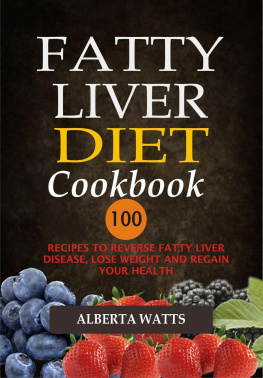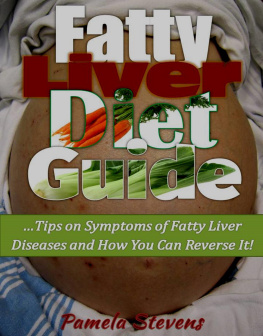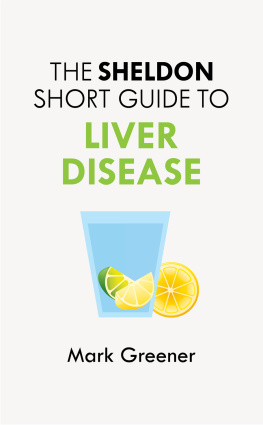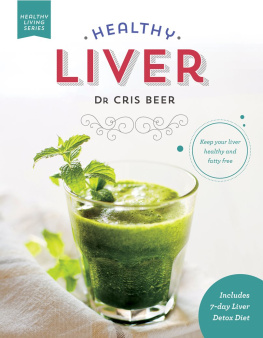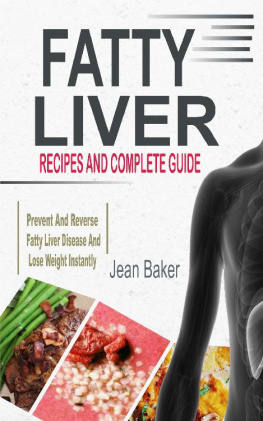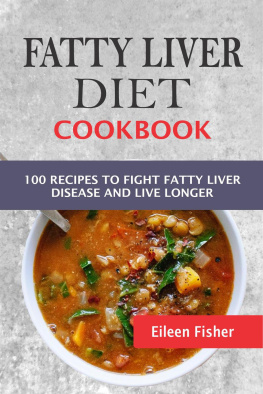Table of Contents
Fatty Liver Diet
A Beginner's Guide for Prediabetics With Recipes and a Meal Plan
Copyright 2020 Larry Jamesonn
All rights reserved. No portion of this book may be reproduced in any form without permission from the publisher, except as permitted by U.S. copyright law.
Disclaimer
By reading this disclaimer, you are accepting the terms of the disclaimer in full. If you disagree with this disclaimer, please do not read the book. The content in this book is provided for informational and educational purposes only.
This book is not intended to be a substitute for the original work of this diet plan. At most, this book is intended to be beginners supplement to the original work for this diet plan and never act as a direct substitute. This book, is an overview, review, and commentary of the facts of that diet plan.
All product names, diet plans, or names used in this book are for identification purposes only and are property of their respective owners. Use of these names does not imply endorsement. All other trademarks cited herein are property of their respective owners.
None of the information in this book should be accepted as independent medical or other professional advice.
The information in the books has been compiled from various sources that are deemed reliable. It has been analyzed and summarized to the best of the Author's ability, knowledge, and belief. However, the Author cannot guarantee the accuracy and thus should not be held liable for any errors.
You acknowledge and agree that the Author of this book will not be held liable for any damages, costs, expenses, resulting from the application of the information in this book, whether directly or indirectly. You acknowledge and agree that you assume all risk and responsibility for any action you undertake in response to the information in this book.
You acknowledge and agree that by continuing to read this book, you will (where applicable, appropriate, or necessary) consult a qualified medical professional on this information. The information in this book is not intended to be any sort of medical advice and should not be used in lieu of any medical advice by a licensed and qualified medical professional.
Always seek the advice of your physician or another qualified health provider with any issues or questions you might have regarding any sort of medical condition. Do not ever disregard any qualified professional medical advice or delay seeking that advice because of anything you have read in this book.
Introduction
Fatty liver is a condition that currently affects almost a third of the US population. This is mainly due to excessive alcohol consumption, unhealthy food choices, and sedentary lifestyles.
Left unchecked, fatty liver can cause damage to the liver and lead to serious medical conditions such as liver fibrosis or scarring, and cirrhosis, which can be fatal.
There is continuing research that indicates a connection between prediabetes and fatty liver disease. For example, scientists are learning that fatty liver disease can cause a person to develop prediabetes. One of the jobs of the liver is to regulate blood sugar. However, the fat accumulating around the liver actually makes it less responsive to insulin, which leads to higher levels of blood glucose.
This also works the other way around as well. Having diabetes can increase the odds of developing fatty liver disease.
As of this writing, there are no FDA approved medications for the direct treatment of fatty liver. Fortunately, and if diagnosed early, this condition is easily reversible by making changes in the patients diet and lifestyle.
The guide starts by providing and overview of the disease and the symptoms that accompany it. A chapter is devoted to listing the foods shown to help with the treatment and reversal of fatty liver according to studies. A diet and lifestyle change plan is also included in the guide to help the patient in the journey to living healthier.
Chapter 1 What is Fatty Liver?
Also known as hepatic steatosis, fatty liver happens when there is a buildup of fat in the liver. Although it is normal to have a small amount of fat in the liver, too much of it can cause a serious health problem.
The liver is the human bodys second-largest organ. Its basic function is to assist in the processing of nutrients from food and drinks and also filtering out harmful substances from the blood.
Too much fat in the liver can cause it to become inflamed. This can damage the liver and eventually cause irreversible damage or scarring and in severe cases, death.
If a person who drinks too much alcohol develops fatty liver, the condition is called alcoholic fatty liver or AFLD.
If a person who doesnt drink alcohol is diagnosed with the disease, its called non-alcoholic fatty liver or NAFLD.
Currently, 25 to 30% of people in Europe and the United States are suffering from NAFLD according to a report released by researchers from the World Journal of Gastroenterology.
What are the Symptoms?
In most cases, fatty liver is asymptomatic which means there are no noticeable symptoms. Patients may initially experience general exhaustion or feel pain and discomfort in the upper right side of the abdomen.
When fatty liver is left unchecked, a person suffering from it can develop complications, one of which is liver scarring. This condition is called fibrosis and if it gets worse, it can lead to liver cirrhosis, a potentially deadly medical condition.
Some symptoms of liver cirrhosis include:
Significant weight loss
Loss of appetite
Fatigue
Weakness
Itchy skin
Yellow eyes and skin
Nosebleeds
Abdominal pain and swelling
Swelling legs
Confusion
Enlargement of the breast in men
What Causes Fatty Liver?
Fatty liver occurs when the body is producing too much fat and it isnt being metabolized efficiently or fast enough. The excess fat is then stored in the liver where it can accumulate and cause the disease.
There are a variety of factors that can cause this fat build-up. As previously mentioned, drinking too much alcohol can cause AFLD, which is usually the initial stage of liver diseases that are associated with alcohol consumption.
But for people who drink alcohol in moderation or those that totally abstain from it and still develop NAFLD, the cause is less clear.
One or a few of these factors are considered to be potential causes:
High blood sugar or diabetes
Obesity
Resistance to insulin
High-fat levels in the blood, especially triglycerides
The following can also cause NAFLD but theyre less common:
Rapid weight loss
Pregnancy
Infections like hepatitis C
Side effects due to certain medications which include tamoxifen, methotrexate, valproic acid, and amiodarone.
Exposure to some toxins
Certain human genes have also been found to increase the risks of having NAFLD.
How is Fatty Liver Diagnosed?
Diagnosis of fatty liver include gathering the patients medical history, conducting a physical exam, and doing one or more of the following tests:
Blood test for elevated liver enzymes
Imaging tests such MRI, CT scan, and ultrasound
Liver biopsy
Fatty liver Treatment
There are currently no approved medications for the treatment of fatty liver. Fortunately, fatty liver is reversible in many cases and is easily accomplished by lifestyle changes like losing excess weight, avoiding or limiting alcohol, and making changes to the patients diet.
Chapter 2 What Is Prediabetes?
If you are prediabetic already, your chances of developing fatty liver are much higher, as will be discussed in the subsequent chapter.
Prediabetes is a stage in which you have sugar levels that are high enough to alarm your doctor, but not high enough to be considered diabetes. You are at a crossroad.



